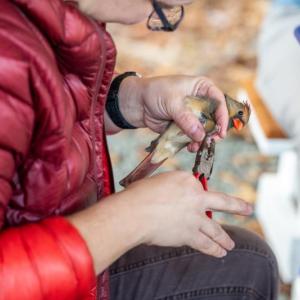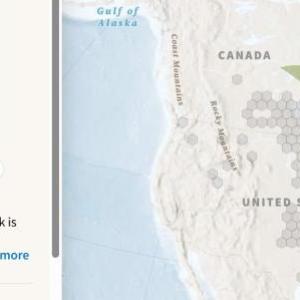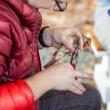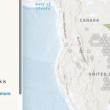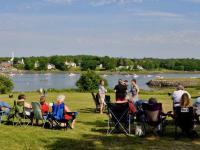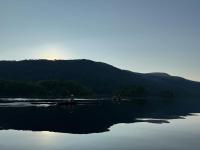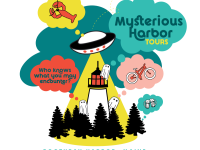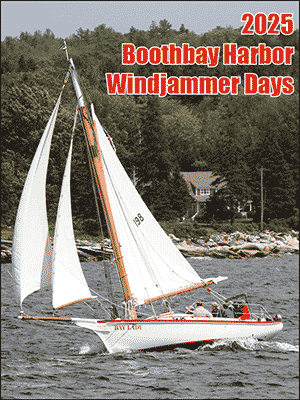Throwing Your Bird Investments in the Trash
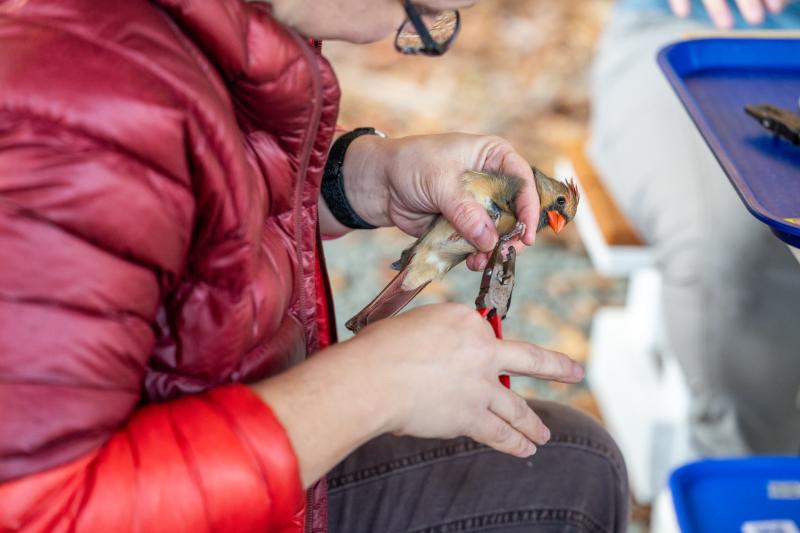 For more than 100 years, thousands of people have been affixing simple bands to the legs of birds in order to understand more about bird movements and answer other questions about their biology. Here, a bird bander is banding a northern cardinal. Courtesy of USGS
For more than 100 years, thousands of people have been affixing simple bands to the legs of birds in order to understand more about bird movements and answer other questions about their biology. Here, a bird bander is banding a northern cardinal. Courtesy of USGS
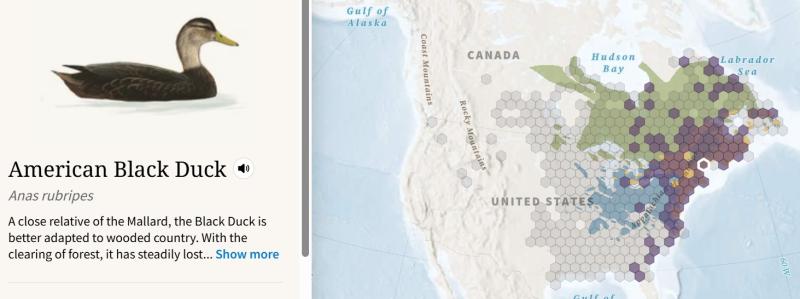 Without the Bird Banding Laboratory, National Audubon's Bird Migration Explorer would not be able to show the migratory connections among American black ducks from the Boothbay region. Each purple polygon represents at least one American black duck that was either banded in the Boothbay region and found in that polygon or vice versa. Courtesy of National Audubon Society
Without the Bird Banding Laboratory, National Audubon's Bird Migration Explorer would not be able to show the migratory connections among American black ducks from the Boothbay region. Each purple polygon represents at least one American black duck that was either banded in the Boothbay region and found in that polygon or vice versa. Courtesy of National Audubon Society
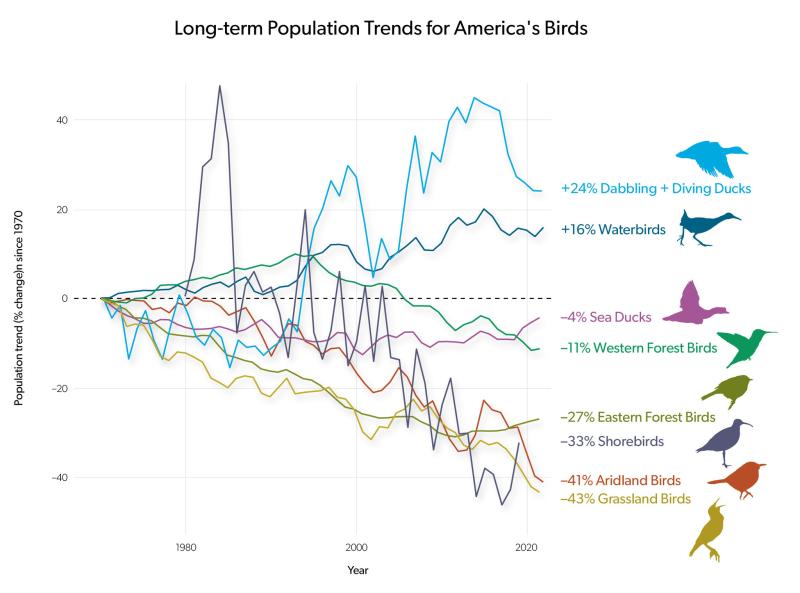 The 2025 State of the Birds report, like thousands of other reports and publications, would not have been possible without results from the Breeding Birds Survey. Courtesy of Cornell Lab of Ornithology
The 2025 State of the Birds report, like thousands of other reports and publications, would not have been possible without results from the Breeding Birds Survey. Courtesy of Cornell Lab of Ornithology
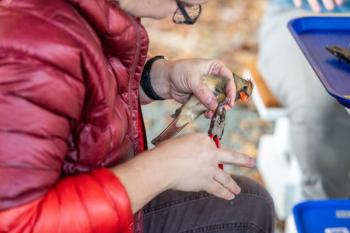 For more than 100 years, thousands of people have been affixing simple bands to the legs of birds in order to understand more about bird movements and answer other questions about their biology. Here, a bird bander is banding a northern cardinal. Courtesy of USGS
For more than 100 years, thousands of people have been affixing simple bands to the legs of birds in order to understand more about bird movements and answer other questions about their biology. Here, a bird bander is banding a northern cardinal. Courtesy of USGS
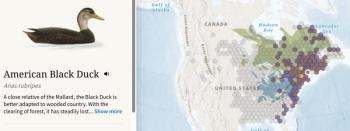 Without the Bird Banding Laboratory, National Audubon's Bird Migration Explorer would not be able to show the migratory connections among American black ducks from the Boothbay region. Each purple polygon represents at least one American black duck that was either banded in the Boothbay region and found in that polygon or vice versa. Courtesy of National Audubon Society
Without the Bird Banding Laboratory, National Audubon's Bird Migration Explorer would not be able to show the migratory connections among American black ducks from the Boothbay region. Each purple polygon represents at least one American black duck that was either banded in the Boothbay region and found in that polygon or vice versa. Courtesy of National Audubon Society
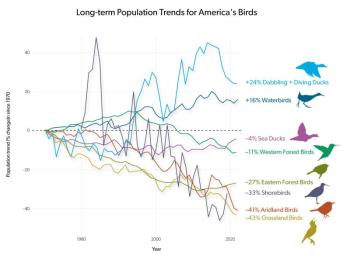 The 2025 State of the Birds report, like thousands of other reports and publications, would not have been possible without results from the Breeding Birds Survey. Courtesy of Cornell Lab of Ornithology
The 2025 State of the Birds report, like thousands of other reports and publications, would not have been possible without results from the Breeding Birds Survey. Courtesy of Cornell Lab of Ornithology
Those of us who love birds and nature, and who recognize that the oxygen we breathe, the food we eat, and the clean water we need, are only possible because of nature, are always more than a little perplexed by the fact that government budgets never provide more than a minuscule token toward nature conservation and protection.
We’ll leave that conundrum for social scientists and politicians to explain.
Meanwhile, it’s already a given that, literally, only a tiny fraction of a penny of your tax dollars goes to programs that help the birds you love and that help keep the world healthy. On top of that, many of the most fundamental bird programs are among the best returns on your taxpayer investment imaginable.
Take the USGS Bird Banding Lab, a program in operation for more than one hundred years. It is, in fact, the longest-running bird banding agency in the world. The Bird Banding Lab collects data from thousands of people who, with no reimbursement from the Bird Banding Lab, do the tedious but important work of placing shiny metal bands on thousands of birds every year. These birds, and their band colors and numbers, are then sighted from places far and near, some healthy and having traveled thousands of miles; others found dead, with perhaps a different story to tell. We don’t know if anyone has ever tried to estimate the return on the taxpayer investment of a program like this but since there are only around paid ten staff as compared to thousands of volunteer contributors, it must be something so huge that an investment broker would be drooling!
So much of the fundamental knowledge used in making conservation choices has come from the federal government’s tiny investment in the USGS Bird Banding Lab. The findings about birds that have been made and continue to come from the Bird Banding Lab are so vast and so foundational that its hard, after a hundred years of accomplishment, to describe them. If you have even a passing interest in where the birds in your yard go during the winter, how many survive each year, how many young are produced annually, whether they come back to the same place to nest, and thousands of other questions, you can thank (at least in part) the USGS Bird Banding Lab.
Another core U.S. government bird program is the Breeding Bird Survey, also now housed at the USGS. The USGS Breeding Bird Survey, started in 1966, is literally the envy of wildlife biologists around the world.
Why?
Because it was a visionary effort to set up a continent-wide breeding bird monitoring scheme that would allow the tracking of the health of the majority of the bird species nesting in the U.S. (and southern Canada). Something like 2,500 volunteers get up before dawn in early summer to drive to the starting point of a mapped survey route. Over the ensuing five hours, they will stop 50 times and count the birds they see and hear over a three-minute period. Believe it or not, there are more than 4,000 of these routes across the U.S. and Canada.
Again, the return on taxpayer investment is enormous. There are only a handful of staff (now even fewer, as of the last few months) that organize the volunteers, collate the data, carry out the statistical analyses, and report the results. Compare that to the thousands of volunteers that do the field work and you will see that the “interest” earned on the sliver of investment is massive.
The USGS Breeding Bird Survey, like the USGS Bird Banding Lab, is another of the foundations upon which everything we know about the status and changes in breeding bird populations are based. Essentially everything you know or want to know in order to answer the question “how are the birds doing?” comes from the Breeding Bird Survey. You know the recent, ground-breaking research that showed that there are almost three billion fewer birds now as compared to 1970? That would never have been documented without the Breeding Bird Survey. Findings like those help guide good laws and policy decisions groups like the Natural Resources Council of Maine, National Audubon, and other nonprofits work for every day.
So, no matter your political affiliation, if you love birds and you love a tax dollar bargain, continuing support for these programs should be a no brainer.
Tragically, both programs are about to be axed in the Trump administration’s 2026 budget bill.
May we suggest you add this to your list of issues about which to make some calls and send some emails to those in elected office?
Jeffrey V. Wells, Ph.D., is a Fellow of the Cornell Lab of Ornithology and Vice President of Boreal Conservation for National Audubon. Dr. Wells is one of the nation's leading bird experts and conservation biologists. He is a coauthor of the seminal “Birds of Maine” book and author of the “Birder’s Conservation Handbook.” His grandfather, the late John Chase, was a columnist for the Boothbay Register for many years. Allison Childs Wells, formerly of the Cornell Lab of Ornithology, is a senior director at the Natural Resources Council of Maine, a nonprofit membership organization working statewide to protect the nature of Maine. Both are widely published natural history writers and are the authors of the popular books, “Maine’s Favorite Birds” (Down East Books) and “Birds of Aruba, Bonaire, and Curaçao: A Site and Field Guide,” (Cornell University Press).

